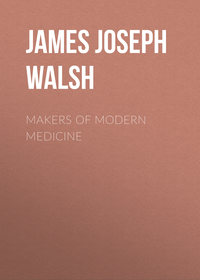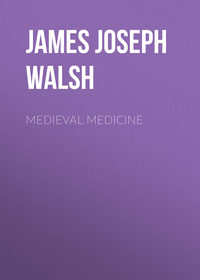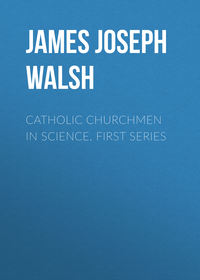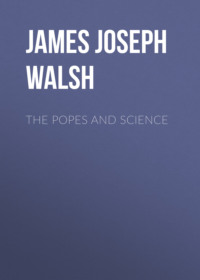 полная версия
полная версияThe Thirteenth, Greatest of Centuries
French law assumed its modern form, and the basis of French jurisprudence was laid, under Louis IX., who called to his assistance, in this matter, the Professors of Law at the University of Paris, with many of whom he was on the most intimate terms. His cousin, Ferdinand of Castile, laid the foundation of the Spanish law about the same time under almost similar circumstances, and with corresponding help. The study of law in the English universities helped to the formulation of the principles of the English Common Law in such simple connected form as made them readily accessible for consultation. Just before the beginning of the last quarter of the Thirteenth Century, Bracton, of whose work much more will be said in a subsequent chapter, drew up the digest of the English Common Law, which has been the basis of English jurisprudence ever since. It took just about a century for these countries, previously without proper codification of the principles of their laws, to complete the fundamental work to such a degree, that it is still the firm substructure on which rests all our modern laws. Legal origins, in our modern sense, came not long before the Thirteenth Century; at its end the work was finished, to all intents and purposes. Of the influence of the universities and of the university law departments, in all this there can be no doubt. The incentive, undoubtedly, came from their teachings. The men who did so much for legal origins of such far-reaching importance, were mainly students of the universities of the time, whose enthusiasm for work had not subsided with the obtaining of their degrees.
It is in medicine, however, much more than in law or theology, that the eminently practical character of university teaching during the Thirteenth Century can be seen, at least in the form in which it will appeal to a scientific generation. We are so accustomed to think that anything like real progress in medicine, and especially in surgery, has only come in very recent years, that it is a source of great surprise to find how much these earnest students of a long distant century anticipated the answers to problems, the solutions of which are usually supposed to be among the most modern advances. Professor Allbutt, the Regius professor of Physic in the University of Cambridge, a position, the occupant of which is always a leader in English medical thought, the present professor being one of the world's best authorities in the history of medicine, recently pointed out some of these marvels of old-time medicine and surgery. In an address On the Historical Relations of Medicine and Surgery to the end of the Sixteenth Century, delivered at the Congress of Arts and Sciences at the St. Louis Exposition in 1904, he (Prof. Allbutt) spoke with regard to one of the great university medical teachers of the Thirteenth Century as follows:
"Both for his own great merits, as an original and independent observer, and as the master of Lanfranc, William Salicet (Guglielmo Salicetti of Piacenza, in Latin G. Placentinus de Saliceto—now Cadeo), was eminent among the great Italian physicians of the latter half of the Thirteenth Century. Now these great Italians were as distinguished in surgery as in medicine, and William was one of the protestants of the period against the division of surgery from inner medicine; a division which he regarded as a separation of medicine from intimate touch with nature. Like Lanfranc and the other great surgeons of the Italian tradition, and unlike Franco and Ambroise Paré, he had the advantage of the liberal university education of Italy; but, like Paré and Wurtz, he had large practical experience in hospital and on the battlefield. He practised first at Bologna, afterward in Verona. William fully recognised that surgery cannot be learned from books only. His Surgery contains many case histories, for he rightly opined that good notes of cases are the soundest foundation of good practice; and in this opinion and method Lanfranc followed him. William discovered that dropsy may be due to a 'durities renum'; he substituted the knife for the Arabist abuse of the cautery; he investigated the causes of the failure of healing by first intention; he described the danger of wounds of the neck; he sutured divided nerves; he forwarded the diagnosis of suppurative disease of the hip, and he referred chancre and phagedaena to their real causes."
This paragraph sets forth some almost incredible anticipations of what are usually considered among the most modern phases of medicine and surgery. Perhaps the most surprising thing is the simple statement that Salicet recognized that surgery cannot be learned from books alone. His case histories are instructive even to the modern surgeon who reads them. His insistence on his students making careful notes of their cases as the soundest foundation of progress in surgery, is a direct contradiction of nearly everything that has been said in recent years about medieval medicine and especially the teaching of medicine. (See Appendix.)
William's great pupil, Lanfranc, followed him in this, and Lanfranc encouraged the practise at the University of Paris. There is a note-book of a student at the University of Paris, made toward the end of the Thirteenth Century, carefully preserved in the Museum of the University of Berlin. This notebook was kept during Lanfranc's teaching and contains some sketches of dissections, as well as some illustrations of operative procedures, as studied with that celebrated surgeon. The tradition of case histories continued at the University of Paris down to the beginning of modern surgery.
Some of the doctrines in medicine that William of Salicet stated so clearly, sound surprisingly modern. The connection, for instance, between dropsy and durities renum (hardening of the kidneys) shows how wonderfully observant the old master was. At the present time we know very little more about the dropsical condition associated with chronic Bright's disease than the fact that it constantly occurs where there is a sclerosis or contraction of the kidney. Bright in his study of albuminuria and contracted kidney practically taught us no more than this, except that he added the further symptom of the presence of albumin in the urine. It must have been only as the result of many carefully studied cases, followed by autopsies, that any such doctrine could have come into existence. There is a dropsy that occurs with heart disease; there is also a dropsy in connection with certain affections of the liver, and yet the most frequent cause is just this hardening of the kidneys spoken of by this middle-of-the-Thirteenth Century Italian professor of medicine, who, if we would believe so many of the historians of medicine, was not supposed to occupy himself at all with ante and post-mortem studies of patients, but with the old-time medical authorities.
Almost more surprising than the question of dropsy is the investigation as to the causes of the failure of healing by first intention. The modern surgeon is very apt to think that he is the only one who ever occupied himself with the thought, that wounds might be made to heal by first intention and without the occurrence of suppuration or granulation. Certainly no one would suspect any interest in the matter as far back as the Thirteenth Century. William of Salicet, however, and Lanfranc, both of them occupied themselves much with this question and evidently looked at it from a very practical standpoint. Many careful observations must have been made and many sources of observational error eliminated to enable these men to realize the possibilities of primary union, especially, knowing as they did, nothing at all about the external causes of suppuration and considering, as did surgeons for nearly seven centuries afterward, that it was because of something within the patient's tissues that the cases of suppuration had their rise.
Unfortunately, the pioneer work done by William and his great disciple did not have that effect upon succeeding generations which it should have had. There was a question in men's minds as to whether nature worked better by primary union or by means of the suppurative process. In the next century surgeons took the wrong horn of the dilemma and even so distinguished a surgeon as Guy de Chauliac, who has been called, not without good cause, the father of surgery, came to the conclusion that suppuration was practically a necessary process in the healing of large wounds at least, and that it must be encouraged rather than discouraged. This doctrine did not have its first set-back until the famous incident in Ambroise Paré's career, when one morning after a battle, coming to his patients expecting to find many of them very severely ill, he found them on the contrary in better condition than the others for whom he had no forebodings. In accord with old custom he poured boiling oil into the wounds of all patients, but the great surgeon's supply of oil had failed the day before and he used plain water to cleanse the wounds of a number, fearing the worst for them, however, because of the poison that must necessarily stay in their wounds and then had the agreeable disappointment of finding these patients in much better condition than those whom he had treated with all the rules of his art, as they then were. Even this incident, however, did not serve to correct entirely the old idea as to the value of suppuration and down to Lister's time, that is almost the last quarter of the Nineteenth Century, there is still question of the value of suppuration in expediting the healing of wounds, and we hear of laudable pus and of the proper inflammatory reaction that is expected to bring about wound repair.
The danger of wounds of the neck is, of course, not a modern doctrine, and yet very few people would think for a moment that it could be traced back to the middle of the Thirteenth Century and to a practical teacher of surgery in a medieval Italian university. Here once more there is evidence of the work of a careful observer who has seen patients expire in a few minutes as the result of some serious incident during the course of operations upon the neck. He did not realize that the danger was due, in many cases, to the sucking in of air into the large veins, but even at the present time this question is not wholly settled and the problem as to the danger of the presence of air is still the subject of investigation.
As to the suture of divided nerves, it would ordinarily and as a matter of course be claimed by most modern historians of surgery and by practically all surgeons, as an affair entirely of the last half century. William of Salicet, however, neglected none of the ordinary surgical procedures that could be undertaken under the discouraging surgical circumstances in which he lived. The limitations of anesthesia, though there was much more of this aid than there has commonly been any idea of, and the frequent occurrence of suppuration must have been constant sources of disheartenment. His insistence on the use of the knife rather than on the cautery shows how much he appreciated the value of proper healing. It is from such a man that we might expect the advance by careful investigation as to just what tissues had been injured, with the idea of bringing them together in such juxtaposition as would prevent loss of function and encourage rapid and perfect union.
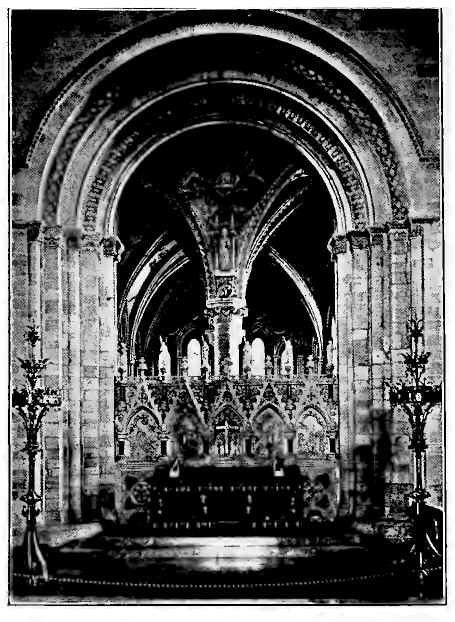
SCREEN (HEREFORD)
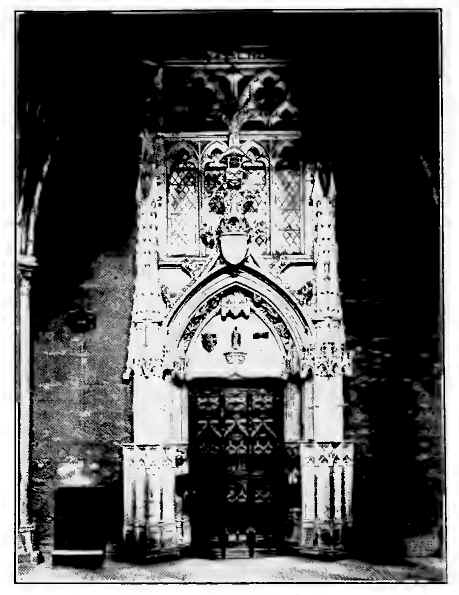
DOORWAY OF SACRISTY (BOURGES)
Perhaps to the ordinary individual William's reference of certain known venereal affections to their proper cause, will be the most astonishing in this marvelous list of anticipations of what is supposed to be very modern. The whole subject of venereal disease in anything like a scientific treatment of it is supposed to date from the early part of the Sixteenth Century. There is even question in certain minds as to whether the venereal diseases did not come into existence, or at least were not introduced from America or from some other distant country that the Europeans had been exploring about this time. William's studies in this subject, however, serve to show that nothing escaped his watchful eye and that he was in the best sense of the word a careful observer and must have been an eminently suggestive and helpful teacher.
What has thus been learned about him will serve of itself and without more ado, to stamp all that has been said about the unpractical character of the medical teaching of the medieval universities as utterly unfounded. Because men have not taken the trouble to look up the teaching of these times, and because their works were until recent years buried in old folios, difficult to obtain and still more difficult to read when obtained, it has been easy to ignore their merit and even to impugn the value of their teaching completely. William of Salicet was destined, moreover, to be surpassed in some ways by his most distinguished pupil, Lanfranc, who taught at the University of Paris at the end of the Thirteenth Century. Of Lanfranc, in the address already quoted from, Professor Allbutt has one very striking paragraph that shows how progressive was the work of this great French surgeon, and how fruitful had been the suggestive teaching of his great master. He says:
"Lanfranc's 'Chirurgia Magna' was a great work, written by a reverent but independent follower of Salicet. He distinguished between venous and arterial hemorrhage, and used styptics (rabbit's fur, aloes, and white of egg was a popular styptic in elder surgery), digital compression for an hour, or in severe cases ligature. His chapter on injuries of the head is one of the classics of medieval surgery. Clerk (cleric) as he was, Lanfranc nevertheless saw but the more clearly the danger of separating surgery from medicine."
Certain assertions in this paragraph deserve, as in the case of Lanfranc's master, to be discussed, because of their anticipations of what is sometimes thought to be very modern in surgery. The older surgeons are supposed to have feared hemorrhage very much. It is often asserted that they knew little or nothing about the ligature and that their control of hemorrhage was very inadequate. As a matter of fact, however, it was not primary hemorrhage that the old surgeons feared, but secondary hemorrhage. Suppuration often led to the opening of an important artery, and this accident, as can well be understood, was very much dreaded. Surgeons would lose their patients before they could come to their relief. How thoroughly Lanfranc knew how to control primary hemorrhage can be appreciated from the quotation just made from Dr. Allbutt's address. The ligature is sometimes said to have been an invention of Ambroise Paré, but, as a matter of fact, it had been in use for at least three centuries before his time, and perhaps even longer.
Usually it is considered that the difficult chapter of head injuries, with all the problems that it involves in diagnosis and treatment, is a product of the Nineteenth Century. Hence do we read, with all the more interest, Allbutt's declaration that Lanfranc wrote what is practically a classical monograph, on the subject. It is not so surprising, then, to find that the great French surgeon was far ahead of his generation in other matters, or that he should even have realized the danger of separating surgery from medicine. Both the Regius professors of medicine at the two great English universities, Cambridge and Oxford, have, since the beginning of the Twentieth Century, made public expression of their opinion that the physician should see more of the work of the surgeon, and should not depend on the autopsy room for his knowledge of the results of internal disease. Professor Osler, particularly, has emphasized his colleague, Professor Allbutt's opinion in this matter. That a surgical professor at the University of Paris, in the Thirteenth Century, should have anticipated these two leaders of medical thought in the Twentieth Century, would not be so surprising, only that unfortunately the history of medieval teaching has, because of prejudice and a lamentable tradition, not been read aright.
Occasionally one finds a startling bit of anticipation of what is most modern, in medicine as well as in surgery. For instance, toward the end of the Thirteenth Century, a distinguished English professor of medicine, known as Gilbert, the Englishman, was teaching at Montpelier, and among other things, was insisting that the rooms of patients suffering from smallpox should be hung entirely with red curtains, and that the doors and the windows should be covered with heavy red hangings. He claimed that this made the disease run a lighter course, with lessened mortality, and with very much less disfigurement. Smallpox was an extremely common disease in the Thirteenth Century, and he probably had many chances for observation. It is interesting to realize that one of the most important observations made at the end of the Nineteenth Century by Dr. Finsen, the Danish investigator whose studies in light and its employment in therapeutics, drew to him the attention of the world, and eventually the Nobel prize of $40,000 for the greatest advance in medicine was, that the admission of only red light to the room of smallpox patients modified the disease very materially, shortened its course, often prevented the secondary fever, and almost did away completely with the subsequent disfigurement.
It is evident that these men were searching and investigating for themselves, and not following blindly in the footsteps of any master. It has often been said that during the Middle Ages it was a heresy to depart, ever so little, from the teaching of Galen. Usually it is customary to add that the first writer to break away from Galen, effectually, was Vesalius, in his De Fabrica Corporis Humani, published toward the end of the second quarter of the Sixteenth Century. It may be said, in passing, that, as a matter of fact, Vesalius, though he accomplished much by original investigation, did not break so effectually with Galen as would have been for the best in his own work, and, especially, for its influence on his successors. He certainly did not set an example of independent research and personal observation, any more fully, than did the medical teachers of the Thirteenth Century already mentioned, and some others, like Mondaville and Arnold of Villanova, whose names well deserve to be associated with them.
One reason why it is such a surprise to find how thoroughly practical was the teaching of the Thirteenth Century university medical schools, is because it has somehow come to be a very general impression that medicine was taught mainly by disputations, and by the consultation of authorities, and that it was always more important to have a passage of Galen to support a medical notion, than, to have an original observation. This false impression is due to the fact that the writers of the history of medical education have, until recent years, drawn largely on their imaginations, and have not consulted the old-time medical books. In spite of the fact that printing was not discovered for more than two centuries later, there are many treatises on medicine that have come down to us from this early time, and the historians of medicine now have the opportunity, and are taking the trouble, to read them with a consequent alteration of old-time views, as to the lack of encouragement for original observation, in the later Middle Ages. These old tomes are not easy reading, but nothing daunts a German investigator bound to get to the bottom of his subject, and such men as Pagel and Puschmann have done much to rediscover for us medieval medicine. The French medical historians have not been behind their German colleagues and magnificent work has been accomplished, especially by the republication of old texts. William of Salicet's surgery was republished by Pifteau at Toulouse in 1898. Mondaville's Surgery was republished under the auspices of the Society for the Publication of old French Texts in 1897 and 1898. These republications have made the works of the old-time surgeons readily available for study by all interested in our great predecessors in medicine, all over the world. Before this, it has always been necessary to get to some of the libraries in which the old texts were preserved, and this, of course, made it extremely difficult for the ordinary teacher of the history of medicine to know anything about them. Besides, old texts are such difficult reading that few, except the most earnest of students, have patience for them, and they are so time-taking as to be practically impossible for modern, hurried students.
Unfortunately, writers of the history of medicine filled up this gap in their knowledge, only too frequently, either out of their imaginations, or out of their inadequate authorities, with the consequence of inveterating the old-time false impression with regard to the absence of anything of medical or surgical interest, even in the later Middle Ages.
Another and much more serious reason for the false impression with regard to the supposed blankness of the middle age in medical progress, was the notion, quite generally accepted, and even yet not entirely rejected, by many, that the Church was opposed to scientific advance in the centuries before the reformation so-called, and that even the sciences allied to medicine, fell under her ban. For instance, there is not a history of medicine, so far as I know, published in the English language, which does not assert that Pope Boniface VIII., by a Bull promulgated at the end of the Thirteenth Century, forbade the practise of dissection. To most people, it will, at once, seem a natural conclusion, that if the feeling against the study of the human body by dissection had reached such a pass as to call forth a papal decree in the matter, at the end of the century, all during the previous hundred years, there must have been enough ecclesiastical hampering of anatomical work to prevent anything like true progress, and to preclude the idea of any genuinely progressive teaching of anatomy.
There is not the slightest basis for this bit of false history except an unfortunate, it is to be hoped not intentional, misapprehension on the part of historical writers as to the meaning of a papal decree issued by Boniface VIII. in the year 1300. He forbade, under pain of excommunication, the boiling of bodies and their dismemberment in order that thus piecemeal they might be transported to long distances for burial purposes. It is now well known that the Bull was aimed at certain practises which had crept in, especially among the Crusaders in the East. When a member of the nobility fell a victim to wounds or to disease, his companions not infrequently dismembered the body, boiled it so as to prevent putrefaction, or at least delay decay, and then transported it long distances to his home, in order that he might have Christian burial in some favorite graveyard, and that his friends might have the consolation of knowing where his remains rested. The body of the Emperor Frederick Barbarosa, who died in the East, is said to have been thus treated. Boniface was one of the most broadly educated men of his time, who had been a great professor of canon and civil law at Paris when younger, and realized the dangers involved in such a proceeding from a sanitary standpoint, and he forbade it, requiring that the bodies should be buried where the persons had died. He evidently considered that the ancient custom of consecrating a portion of earth for the purpose of burial in order that the full Christian rites might be performed, was quite sufficient for noble as for common soldier.
For this very commendable sanitary regulation Boniface has been set down by historians of medicine as striking a death blow at the development of anatomy for the next two centuries. As a matter of fact, however, anatomy continued to be studied in the universities after this Bull as it had been before, and it is evident that never by any misapprehension as to its meaning was the practise of dissection lessened. Curiously enough the history of human dissection can only be traced with absolute certainty from the time immediately after this Bull. It is during the next twenty-five years at the University of Bologna, which was always closely in touch with the ecclesiastical authorities in Italy and especially with the Pope, that the foundations of dissection, as the most important practical department of medical teaching, were laid by Mondino, whose book on dissection continued to be the text book used in most of the medical schools for the next two centuries. Guy de Chauliac who studied there during the first half of the Fourteenth Century says he saw many dissections made there. It was at Montpellier, about the middle of the century, when the Popes were at Avignon not far away, that Guy de Chauliac himself made attendance at dissections obligatory for every student, and obtained permission to use the bodies of criminals for dissection purposes. At the time Chauliac occupied the post of chamberlain to the Popes. All during the Fourteenth and Fifteenth centuries constant progress was making in anatomy, especially in Italy, and some of it was accomplished at Rome by distinguished teachers of anatomy who had been summoned by the popes to their capital in order to add distinction to the teaching staff at the famous Papal School of Science, the Sapienza, to which were attached during the next two centuries many of the distinguished scientific professors of the time.



